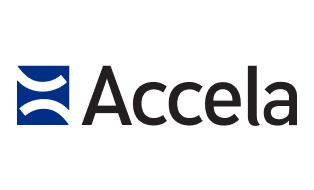While many industries were already shifting toward greater SaaS adoption pre-COVID, the pandemic has given governments a much needed push to further embrace the cloud. The cloud really isn’t that different in the public and private sectors. There may be a bit less inertia in the public sector, but the pandemic counterbalanced much of this as many governments have shifted to remote work and digital services for the first time.
As agency IT and business leaders move to a SaaS delivery model for their services, they must be certain that their service provider will meet user requirements, and that they will neither ‘lose control’ of their delivery of service, nor lose the ability to innovate as needs change. People’s lives and livelihoods depend on the efficacy of service delivery, like licensing to get more nurses on the COVID-19 frontlines and cost reduction on essential building projects like hospitals and schools. Building trust with agencies and users in the availability, performance, and security of their cloud services defines success.
We don’t trust what we don’t see. Your team and tools must be available to users.
There can be a sense of exposure when adopting the cloud. Trust is created through consistent execution and performance, and by ensuring transparency and team accessibility.
One way to do this is by providing real-time, accurate information on the state of all services and planned maintenance within your website or service portal. Root Cause Analysis (RCA) – including statement of Root Cause and Corrective Actions to prevent recurrence – occurrences of degraded performance, and upcoming maintenance should be published. Government IT and business leaders then can inform users before it disrupts essential operations.
Further, support team and customer success functions need to be available any time to ensure delivery of quality SaaS. The risk of operating a highly available, high-performance service is managed by the partner, and customers are equipped with the tools to manage and foster trust in it by their users. This can save customers, like the government agencies we partner with, valuable time and money and streamline how services are delivered to residents.
Cost effectiveness is also key to developing trust. Accela, for example, provides an ROI Calculator to help agencies balance what’s right for them, and then provide the same or greater cost performance through the lifespan of the solution.
SaaS provides governments with several cost benefits – in time and materials saved, manpower costs, etc. This means that governments can reallocate costs saved toward increasing citizen engagement, building thriving communities, and investing in needed citizen services. Further, cost saved on government initiatives trickles down to cost saved by the community, ultimately making communities more affordable and livable long-term. The ripple effect of SaaS implementation – especially in government – is astronomical. Making this visible to partners is essential in increasing trust, and further enables funding shifts from CAPEX to an OPEX basis.
Examining performance through the lens of service delivery and platform agility.
Performance is key to building end-user and agency trust. Performance often becomes a catch-all term for quality of product and service. I see performance as the absolute response time and consistency of a platform itself. Further, agencies want services to be responsive to their needs; It’s most illustrative to think in terms of specific use-cases around effective service delivery and platform agility.
Effective service delivery: A Weston, FL case study.
Customer IT and business leaders need to know that their provider will deliver with efficiency and efficacy. My team recently partnered with Weston, Florida to help the city improve delivery by replacing an antiquated building and permitting system with one that removed the burden of upgrades and patching and simultaneously provided future proofing.
Prior to this, Weston was utilizing an antiquated system for planning and permitting that had no public-facing portal. The city relied on customers to physically submit paper applications and plans for review. With the goal to improve service delivery to constituents, Weston implemented the Accela system and refined internal procedures. COVID-19 catalyzed Weston’s digitization as the city aimed to reduce physical contact. Now, the city is experiencing an 87.5% reduction in office foot-traffic; 75% of staff time is repurposed to focus on quality assurance and strategic efforts; and, there’s an 80% decrease in plan review turnaround times.
Ryan Fernandes, director of technology services for Weston, said “Maybe most importantly, is dealing with upgrades and patching. In my opinion, there is no better group to deal with those nuances than the software vendor themselves.”
Platform agility: A Santa Clara case study.
As we look toward recovery and increasing revenue opportunities, SaaS can also play a critical role. Another partner, Santa Clara County, recently had an urgent need to reopen businesses, quickly, while also maintaining COVID-19 public health compliance. Together we worked to implement a SaaS solution to assist, and with the quick pace of the pandemic’s developments, it was needed almost immediately. This is what we sign up for – to be available to the immediate needs of our partners and to serve as a guide through implementation and beyond.
The pandemic has inspired agencies to have a full court press on SaaS and cloud adoption. And as IT leaders, it is our responsibility to be responsive to customer needs and ensure their services are always available and performing optimally.
Trust isn’t possible without security and compliance built in.
Security and compliance – throughout the product development lifecycle – is foundational to building trust in a cloud provider. Providers ought to leverage the most current tools for both static and dynamic analysis of service code, enforcing a “SaaS First, Default Deny, Zero-Trust” posture when it comes to data security.
All services should be developed with cloud delivery in mind, and no network or peering relationships should be allowed without involvement in the product life cycle. It is important to ensure tight controls around the Trust Principles for Service Operations and conduct yearly audits and certifications for SOC2 TYPE2, HIPPA HITECH, PCI-DSS SAQ-D, CCPA, and more.
All of this said, at the end of the day your journey might be a bit more personal. To share a personal anecdote: I’ve been fortunate enough to engineer and operate some of the largest, most available, and most compliance-sensitive cloud services in the world. I’m proud to now apply that experience for the success of many government agencies and communities around the world.
When discussing building trust in cloud services, I think of my early career in business intelligence and data warehousing solution development. Most of our end-users were IT and reporting analysts. Many of them were afraid that BI and data warehousing would make their jobs obsolete.
It was our job to empower these people with meaningful tools so they could quickly provide critical insights to their business stakeholders, and to eliminate the need for a ‘reporting treadmill,’ 24/7. The data had to be correct, on time, and easily accessible. We were wildly successful in turning reporting analysts into providers of business intelligence for their users!
That’s what a trusted cloud service provider can provide – empowerment. In the public sector, this empowerment quite literally enables the delivery of life-and-death constituent services. And adapt when conditions change, as the COVID-19 pandemic so clearly highlighted. This trust is only shaped by the availability, performance and security of your cloud services.




